Results
-
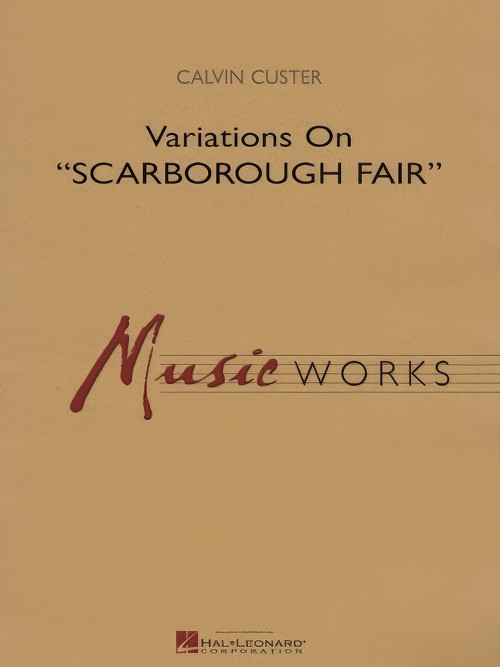 £76.99
£76.99Scarborough Fair, Variations on (Concert Band - Score and parts) - Custer, Calvin
First published in 1989, this work from the late Calvin Custer epitomises his command of orchestration and understanding of musical pacing. The familiar folk melody is stated first by a solo flute then followed by a remarkable series of variations starting with a brass choir accompanied by woodwind flourishes. An Andante variation features the woodwind choir accompanying solos by baritone and oboe, and this leads to a striking fugue variation and bold finish. Truly symphonic band writing at its best.Duration: 4:45
Estimated dispatch 7-14 working days
-
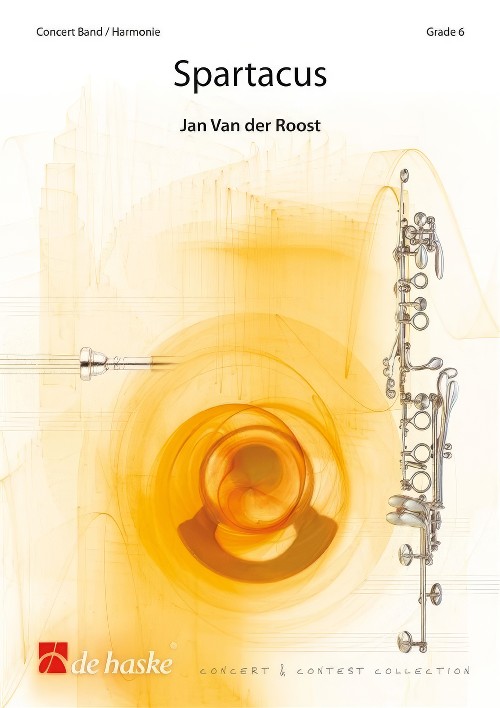 £179.99
£179.99Spartacus (Concert Band - Score and Parts) - Van der Roost, Jan
Spartacus is a "Symphonic Tone Poem" with 3 joints. Each section has its own melodical materials, however: in the final movement the main theme from the second section returns in a 'grandioso'-tutti. The last bar but one recaptures the 'oriental' atmosphere of the very beginning. The first section (= from the beginning till J) builds up a climax by repeating and accumulating some melodical and rhythmical structures. The oriental character of the melodical fragments refers to the origin of the Roman slaves. The second section evokes the love between Spartacus and his love by giving a peaceful atmosphere. The mean theme (presented the first time at letter L) has a broad and wide character and refers slightly to film music. In this part of the composition, a special attention is given to the orchestration. The final section is more aggressive and martial and refers to the revolt of the slaves against the Roman oppressors. In the middle of this movement, an accumulation of the 12 tones symbolises the crucifixion of the slaves: the english horn resumes partly the cadenza of the flute (at letter J), as if he wants to show again the eternal love between Spartacus and his love a very last time ... The theme at the third bar of letter T is actually based on the 2nd theme of this section (which starts at the fifth bar of letter R), but has been worked out rhythmically.Duration: 13:50
Estimated dispatch 7-14 working days
-
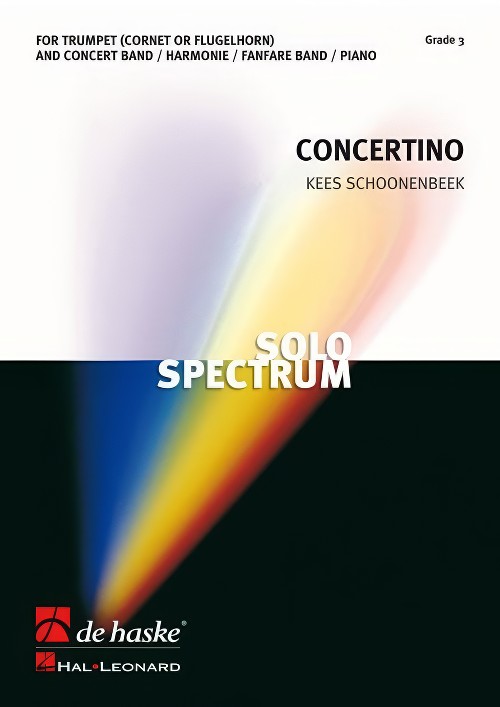 £104.99
£104.99Concertino (Trumpet Solo with Concert Band - Score and Parts) - Schoonenbeek, Kees
The first movement of this work, an Allegretto, begins with a fanfare-like opening. After a number of other melody lines, a reprise of the beginning follows, which ends in a cadenza for the soloist. Movement two, titled Rituel, is characterized by interplay between the soloist and the band within a stately melody. In the final movement, the theme of the first movement's opening returns. As the indication 'alla marcia' of the last movement suggests, this Allegro Giocoso contains march-like music that guarantees a lively conclusion. With Concertino, Kees Schoonenbeek has written an appealing work that is very suitable for a beginner soloist. It is also available for trumpet and piano.Duration: 9.00
Estimated dispatch 7-14 working days
-
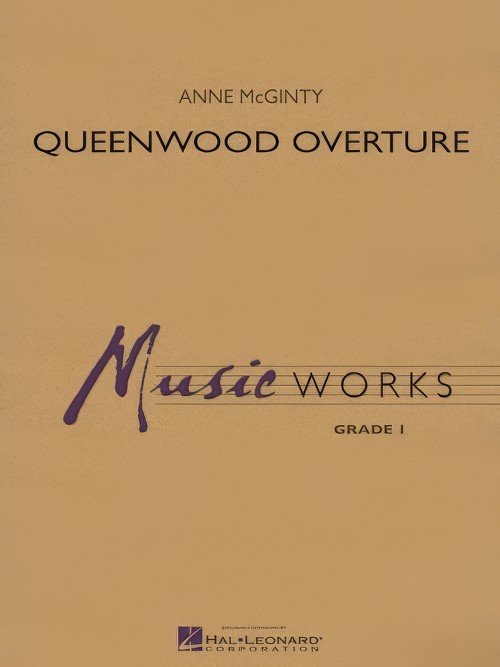 £53.50
£53.50Queenwood Overture (Concert Band - Score and Parts) - McGinty, Anne
Ingeniously built on a single melodic fragment first stated by the trumpets, the opening section of this very easy overture alternates between a bold full band statement and a more lyrical melody in the woodwinds. A contrasting slow section features a flowing melody in the woodwinds with trumpet answering statements before returning to the fast tempo. First published in 1984, this is a proven winner for beginning bands.
Estimated dispatch 7-14 working days
-
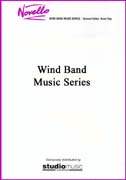 £164.95
£164.95ALLEGRETTO AND VIVACE (Concert Band - Score and Parts) - Arnold, Malcolm - Parkes, Peter
Malcolm Arnold's Second Symphony Op.40 was written in celebration of the Diamond Jubilee of the Bournemouth Municipal Orchestra. The first two movements are featured in this arrangement by Peter Parkes. The Allegretto is in sonata form and expresses the quiet joy of being alive on a fine summer's day. The Vivace is a variation on two chords stated in the first few bars
Estimated dispatch 7-14 working days
-
 £37.95
£37.95ALLEGRETTO AND VIVACE (Concert Band - Score only) - Arnold, Malcolm - Parkes, Peter
Malcolm Arnold's Second Symphony Op.40 was written in celebration of the Diamond Jubilee of the Bournemouth Municipal Orchestra. The first two movements are featured in this arrangement by Peter Parkes. The Allegretto is in sonata form and expresses the quiet joy of being alive on a fine summer's day. The Vivace is a variation on two chords stated in the first few bars
Estimated dispatch 7-14 working days
-
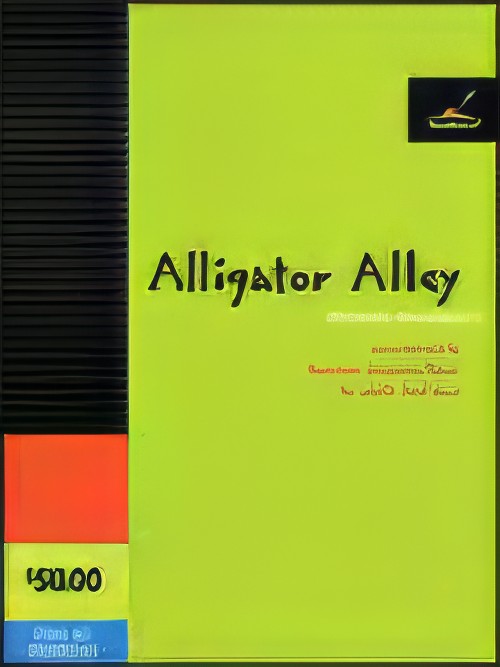 £57.50
£57.50ALLIGATOR ALLEY (BandQuest) - Daugherty, Michael
Here is the first published work for young band from award-winning composer Michael Daugherty! Describing a stretch of Interstate 75 that crosses through Florida's Everglades National Park, Alligator Alley celebrates this noble beast that has remained largely unchanged from prehistoric times. The first theme ("Alligator's Theme") features the woodwinds (predominantly bassoons) while the second theme ("Hunter's Theme") is performed by the brass. Program notes and staging suggestions are included in this marvelously descriptive work. (4:30)
Estimated dispatch 7-14 working days
-
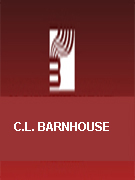 £33.66
£33.66Ashford Variations (Concert Band - Score and Parts)
You'll quickly fall in love with this great little rock tune based on a very famous melody by J.S. Bach. First stated by the woodwinds in a legato 3/4 style, the melody soon is revamped in 4/4 and a medium rock style. Excellent materials for the end of the first year or second year students. Very attractive as a concert piece. This theme will be familiar to your concert audience.
Estimated dispatch 7-14 working days
-
£179.99
Austrian Overture (Concert Band - Score and Parts)
Austria is an industrious country. During the last century--which was characterized by extreme changes--the hard-working and ambitious people achieved a great deal, enduring two world wars and numerous political skirmishes. Despite all the problems involved in a change from a dual monarchy to a small state, Austria has found its independence. With his Austrian Overture, Thomas Doss looks toward the future. The first part of the composition provides an optimistic outlook; along with the happiness and energy, some musical humor is also present: while the horns powerfully express joy, small yodeling melodies sound throughout. As the rhythm continues in search of new ways to go, catchy tunes compete to be heard. However, in addition to the energetic, diligent Austria, there's also the quiet landscape where one can enjoy repose and beauty. These aspects - as well as the freedom of spirit and cultural life -are conveyed in the second part of the work through the surprising linking of chords, romantic phrasing, and tender melodies. But life never stands still: creativity, ambition, and work are the driving forces of our existence. Embracing this thought, a reprise of the first part provides a compelling ending. 10:26
Estimated dispatch 7-14 working days
-
 £189.95
£189.95CAROL SYMPHONY (Novello Symphonic) - Hely-Hutchinson, Victor - Williams, Gerrard
Score & Parts. Carol Symphony is one of Victor Hely-Hutchinson's most popular works. It is in four linked movements that may be played separately. Includes: Prelude: Adeste Fideles; Scherzo: God Rest Ye Merry, Gentlemen; Romance: Lullay, Lullay, The First Nowell; Finale: Here we come a-wassailing. Duration: 30 mins. First movement recorded on QPRM147D Joy to the World (Central Band of the Royal Air Force, S.L. Stirling)
Estimated dispatch 7-14 working days
